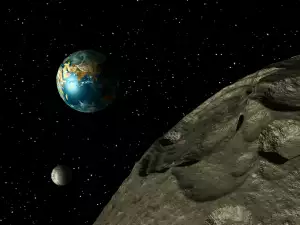Scientists from the International Centre for Radio Astronomy Research (ICRAR) in Western Australia have calculated when the end of the Universe will come. According to astronomers, the end of time will occur after about 100 trillion years, when all that will remain of the cosmos we know today will be freely moving electrons, photons and positrons.
The Australian scientists reached this sinister conclusion after several years of observation of 220 thousand galaxies far away from Earth. With the aid of 5 of the most powerful telescopes humanity has ever created, the scientists have peered into the far-off star clusters and compared the light they emit now with the light from 2 billion years ago.
This glimpse back in time is possible due to the fact that the light emitted from faraway stars took it hundreds of millions of years to reach our planet. On the basis of this comparison, astronomers have determined that the Universe generates 2 times less energy than it did 2 billion years ago.
"Beginning from our current age, the Universe is doomed to wither and die. The Universe has basically sat down on the sofa, pulled up a blanket and is about to nod off for an eternal doze, " says Simon Driver, the head of the apocalyptic research.
The end of the Universe will happen in 2 stages, theorize scientists. The 1st will begin when the last red dwarf is snuffed out in the cosmic expanse. This will bring about absolute darkness. The only objects remaining in space will be black holes, white dwarfs and neutron stars.
All of the planets will be destroyed by the increasing gravity of black holes, which will gradually grow supermassive and usher in the final days of the Universe.
The black holes will swallow all of the other celestial bodies, then eventually merge and disappear. In the aftermath, the Universe will become inhabited by electrons, photons and positrons.









